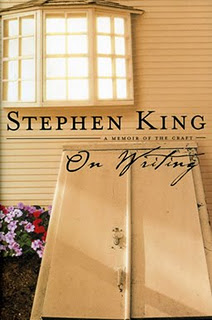NaNoWriMo: How to “Pants” Through Your Novel like a Rampaging Panzer Division in 1940 France (and Why You Should)

Hopefully, we don’t much like Nazis. Even so, it’s hard not to admire the way the panzer divisions rampaged across Europe, redefining modern warfare as they went. We’ll come back to them.
First, Fine Art and Music.
A friend of mine is a well-known Scottish landscape artist. He goes about his paintings pretty much how you would expect: roughs them out on the canvas itself, then adds layers of precision until he has an amazing picture. However, a friend of his, another professional artist (who shall remain nameless) starts painting in the top left hand corner of the canvas, and like a color laser printer zigzags across the thing until the picture is complete.
This, I am assured, is not normal.
Ask most professional creatives and you’ll find most of them work in layers.

Sure, rock musicians improvise solos, but do so over an established bassline. Classical musicians work from sketches either in their heads or on an instrument. My friend and fellow dad, the soundtrack composer Andrew Cottee, told me he messes around on the keyboard until he has a melody, then writes it down, then adds layers of orchestration. If he conducts the final result, that’s another layer.
You can see where I’m going with this. Most creative projects need to be layered into existence because the Devilish Details support the Grand Vision, which in turn frames the Devilish Details.
Art and Music lend themselves to an obvious top-town approach; from sketch to blocking out to finished product. Design and engineering seem to violate this because the Grand Vision is not the same as the physical structure. Barnes Wallis famously designed the WWII Wellington Bomber around the bomb bay. Modern software design can often begin with the interface — the screens the user sees — and work backwards to the actual programming. In both cases the… skin and bones of the thing are really just details supporting the vision.
And now we come to writing fiction.
Fiction is like Music in that it’s experienced in linear fashion; one part must follow from the next in ways the reader appreciates. It’s also like Architecture in that linearity is critical; just as the building must work from ground up structurally (i.e. not fall down), the novel — our kind of novel, at any rate — must have a plot where one passage leads logically to the next. However, whereas a composer need only make sections of a composition relate to each other by juxtaposition, and whereas an architect can call on an engineer to find ways of holding up the most unlikely follies, the author must make a plot that dovetails all the way to the end, and does so in plain sight.
It follows that fiction has three interrelated layers: not just Vision and Details (prose, characters, worldbuilding etc), but also Plot.
This makes a purely top-down approach unrealistic. Yes. structurally, details support plot supports vision. However, creatively, the details and vision may have to be adjusted to support an exciting plot, or the plot might have to adapt to a new vision. There’s almost always going to be some kind of what IT geeks call iteration; going round in circles tinkering until it’s right, pretty much like my old dad truing a bicycle wheel, tweaking the spokes again and again, getting closer to perfection, except instead of spokes we have vision, details, and plot.
The bike metaphor breaks down because the plot itself requires iteration; some stuff that’s cool to have now requires stuff to have been in the story earlier. Remember Chekhov’s gun? He said if you put a gun on the mantlepiece in Act 1, somebody must to use it before the play ends. There’s a corollary, call it Harold’s Gun: If a character suddenly needs a gun, you need to go back and plant it earlier.
So it is that writers usually create fiction by iterating, not just through the layers, but also through the plot itself.
In the popular imagination, this happens concretely with redraft following redraft until it’s right. (Oh the angst!) People like this because it looks like hard work (O! The Unbearable Suffering!) and because it approximates to the experience of reading a book. The reality is usually slightly different and less angsty.
The people who write like this are the “pantsers” — the writers who “write by the seat of their pants.” We’re talking about them because this is what NaNoWriMo is encouraging you to do: just write.
I’m not usually a pantser, but many of my friends are, and they’re in the company of behemoths like Stephen King (who has helpfully written a book on how he writes). I can therefore tell you with great confidence that most pantsers aren’t like that artist, starting at the start and writing a perfect first draft to the end. They’re not even trying to be. Instead, pansters focus on one layer at a time, relying on it to shape the other layers just enough so they can subsequently work on them.
Usually this means doing the plot first (though the plot will be typically can be “character driven”; a whole different can of worms). Once they’ve got to the end, then they have a sense of what the story is about (vision), what kind of story world and voice will truly support it (details), and what they need to add to the plot to make the plot make sense. Until they’ve got to the end, they don’t bother going back to fix continuity or style because everything they’ve written up to that point is provisional.
Remember my Harold’s Gun?
Imagine in the middle of your novel you need a character to snatch up a gun and threaten somebody. At this point, any gun will do, and for some reason the Lee Enfield Rifle pops into your head. You remember Chekov’s Gun, and diligently go back through 30,000 words of draft weaving the gun into the story (“That? Oh grandpa used that on the Western Front.” “Don’t touch it, it’s loaded!”) Boring fiddly work — especially because the insertions have to feel right where you make them — and your writing grinds to a halt for an entire day. Once it’s done, you pick up the thread and write on. Then, near the end when the zombies attack, you realise the gun needs to be something heavier, perhaps a shotgun. Or perhaps it needs to be an axe? Now you need to go back again turn the rifle into something else. Extra work, and — by the way — that day you spent was utterly wasted.
Pantsers generally don’t do this. Need a gun on the mantlepiece? Write as if it was always there. No surprise then that a pantser’s first draft is pretty “pants” (do Americans use that as a derogatory term?). It’s full of continuity errors, passages where the style breaks down, and pacing errors. Perhaps the main character changes gender halfway through, the voice shifts from 1st to 3rd person and back randomly, and the climax takes place in a castle that doesn’t exist in the first chapter.
The pantser doesn’t care. They’ve reached their objective. They can mop up later.
Which finally brings us to blitzkrieging panzers.
The point about a rampaging panzer division is that it rampages towards its objective. It’s not trying for “methodical” or “perfection”. If it hits a pocket of resistance, it just goes around it. Once it’s reached its objective, smashed the enemy’s will to resist, then other waves can sweep along in its wake, mopping up, fixing bridges, laying down supply lines.
If you are doing NaNoWriMo, then this is how you should be. (I mean as a writer. Please don’t invade France.)
Let go of any idea of having a finished, publishable — nay, even readable — novel at the end. Perfection first time is possible, but only in an-infinite-number-of-monkeys-creating-Hamlet kind of way. In pursuing that fictional objective, your attempt at fiction will probably fall short of a more useful objective: having fun creating a first draft that you can then fix at leisure
Also, keep in mind that pantsing a first draft, like the panzer blitzkrieg, is flashy and dynamic; it’s not the only necessary component for victory. There’s more methodical work to follow, but not during NaNoWriMo.
M Harold Page (www.mharoldpage.com) is a Scottish-based writer and swordsman with several Historical Adventure franchise books in print. His creative writing handbook, Storyteller Tools is available on Amazon. If you live near Edinburgh, Scotland, he would love to teach you how to fight in Medieval German Longsword style.
“Please don’t invade France.”
Sigh. Some people have to take all the fun out of everything.
“Pantsing” sounds wonderful but utterly foreign. An odd-shaped yoke designed to pull something I’m not sure I want to move.
It never really occurred to me how out of phase I am with this method until I read your piece, Mr. Page.
I begin the writing process with very specific scenes, moods, conflicts and sensations that I want to display to (inflict upon?) the reader. My entire writing process is based around framing, building up to, and pulling off these critical moments.
I cannot see how I could come anywhere near hitting the mark by charging it blindly. No Panzers for me. I’ll take Tiger Mountain by strategy.
@John
I don’t “pants” either! I explore conflicts, outline, tinker, repeat until I feel ready to draft. But people DO pants, hence my article.
Wasn’t jabbing at your article, which was fascinating. It made me think.
I was just marveling at how differently I come at things than the pantsers.
And kind of wondering if maybe I’m a little jealous of them.
Don’t be too jealous! Pantsing without some planning is a great way of having lots and lots of first three chapters languishing on your harddrive. Next week I’ll make some humble suggestions about planning 🙂
I thought I was a pantser until I went to a presentation about online tools for writers by Bud Sparhawk and Jamie Todd Rubin and realized that I was using all the same tools as the plotters, just later in my process.
My pre-writing and early draft work most resembles field anthropology. I find a character to be my key informant, win the character’s trust until s/he tells me everything s/he can, and then I ask to be introduced to whatever other characters I need to consult. An old friend observes, “It’s not necessary to have a dissociative disorder to write fiction, but apparently it helps.”
LOL. I think most pantsers are less pantsers than they think. However I’m very glad to be an outliner.
M. Harold Page said “Pantsing without some planning is a great way of having lots and lots of first three chapters languishing on your harddrive.”
This. This. A million time this. I have so many of those three chapter pieces. I also have a few NaNoWriMo pieces floating around with them. I think NaNoWriMo is a great exercise, but I have yet to finish anything started with it.
Though I suspect this says much more about me than about it. 😉
@FraserRonald – It could also be to do with the way your creativity works. If you’re like me, then planning is a kind of sculpting exercise.
[…] week, I did a kind of public service announcement about “pantsing”, the “just write” school of writing — discovery writing — applied to your […]
[…] NaNoWriMo: How to “Pants” Through Your Novel like a Rampaging Panzer Division in 1940 France (an…: If you subscribe to the “Just Write” approach, then — seriously — just write. Switch off your spell checker, don’t edit or tinker, and if you need to add something to the story, just make a note and move on. You can mop up later. […]